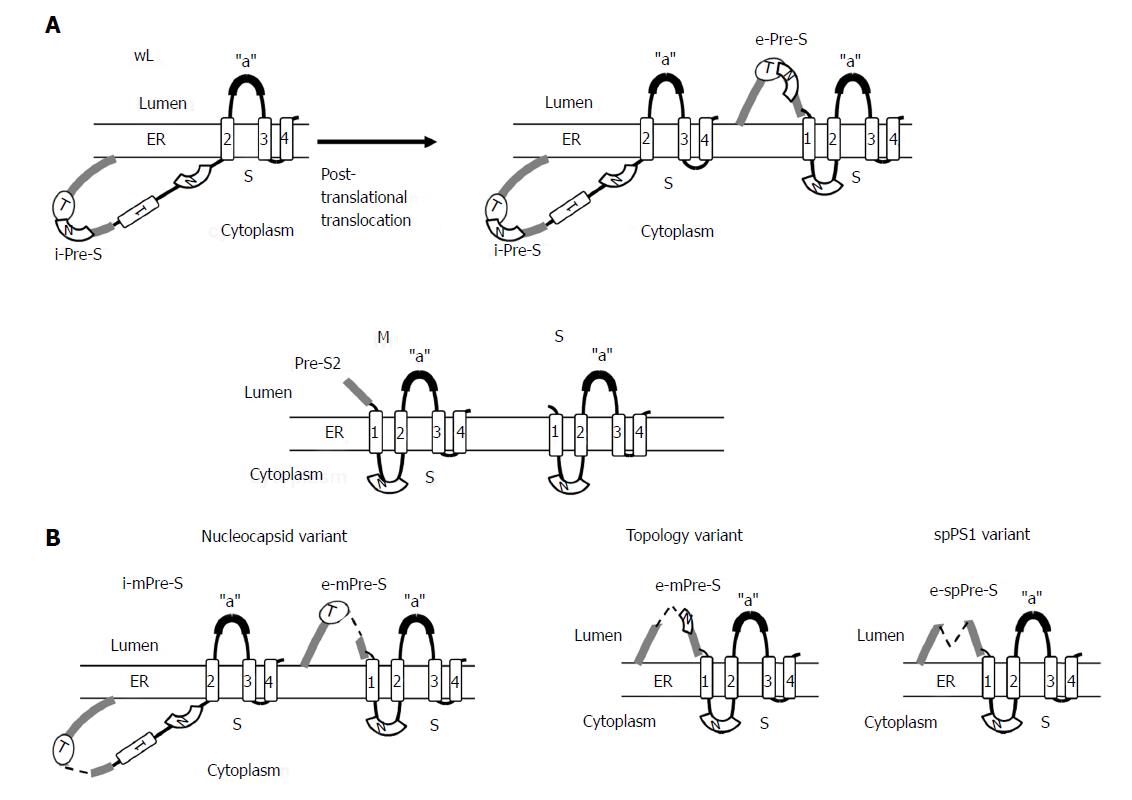Copyright
©The Author(s) 2018.
World J Gastroenterol. Apr 14, 2018; 24(14): 1507-1520
Published online Apr 14, 2018. doi: 10.3748/wjg.v24.i14.1507
Published online Apr 14, 2018. doi: 10.3748/wjg.v24.i14.1507
Figure 4 Topology of wild-type small (S), medium (M), and large (L) envelope proteins.
The predicted four membrane-spanning segments (indicated by rectangular boxes) of S project their N and C termini into the endoplasmic reticulum lumen (A). The M proteins exhibit a topology similar to the S protein with their N-terminal pre-S2 domain protruding into the endoplasmic reticulum (ER) lumen, whereas the L proteins display a dual topology. Upon cotranslational membrane integration, the pre-S domains of L proteins are initially located on the cytosolic side of the ER membrane (i-Pre-S); they are controlled by the dual topology site (indicated by an oval). During maturation (marked by the arrow), nearly half of mature L-protein molecules posttranslationally translocate their pre-S region to the luminal space (e-Pre-S). The nucleocapsid (N) binding sites in the pre-S and S region are indicated by the white curved box. (B) The L-protein topology of pre-S/S variants. The nucleocapsid variant demonstrates a dual topology, and the topology variants and spPS1 variants display a uniform topology. The broken line indicates deletion, and “a” indicates “a” determinant.
- Citation: Chen BF. Hepatitis B virus pre-S/S variants in liver diseases. World J Gastroenterol 2018; 24(14): 1507-1520
- URL: https://www.wjgnet.com/1007-9327/full/v24/i14/1507.htm
- DOI: https://dx.doi.org/10.3748/wjg.v24.i14.1507









